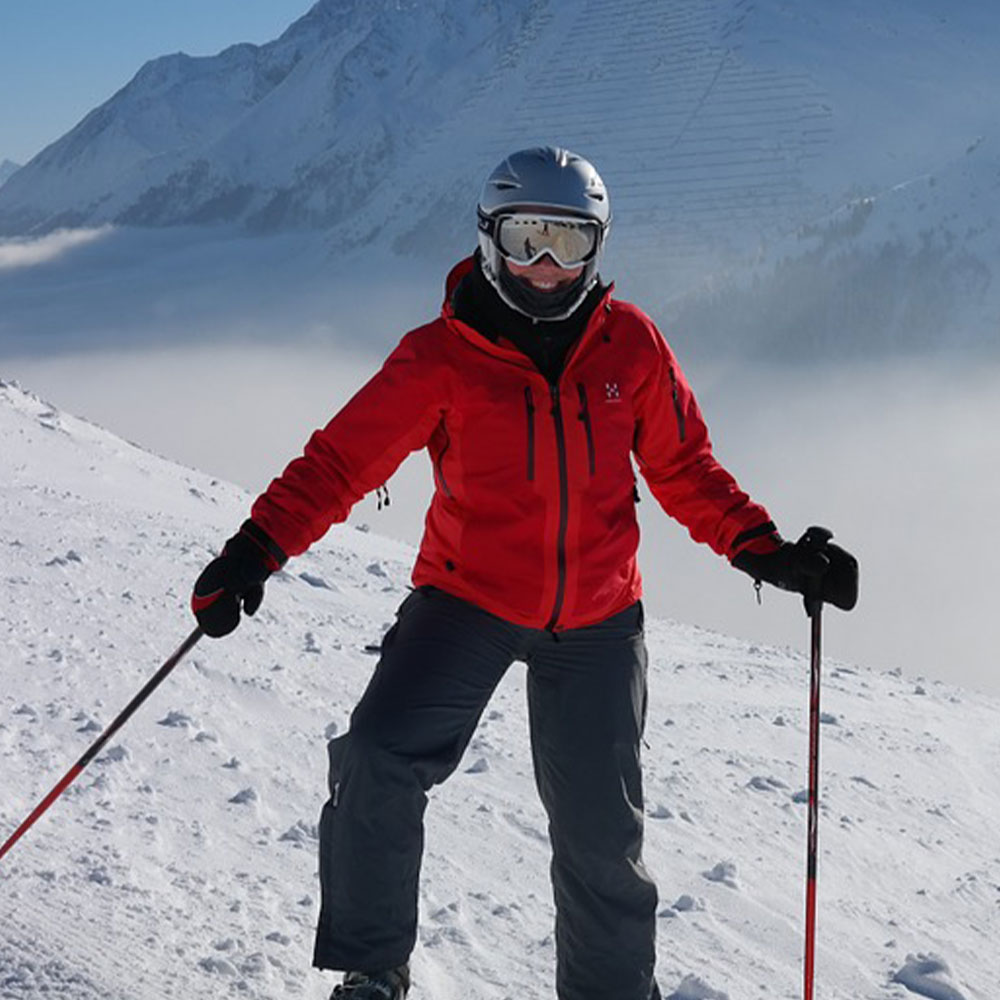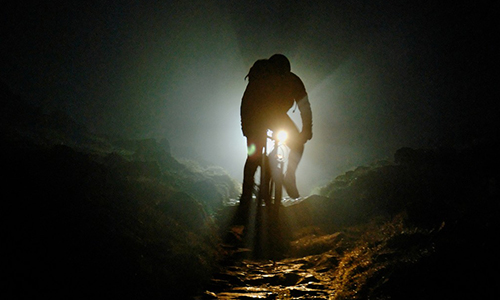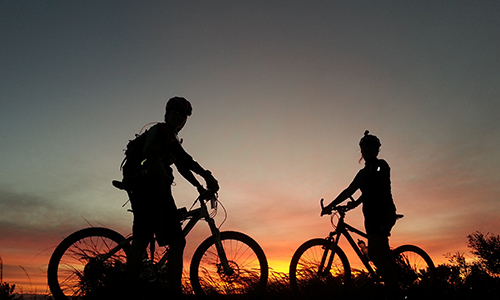Riding at night? Here’s what you need to keep in mind
Author

A keen runner, skier and nuts about cycling. Karl lives in Cumbria, where he loves encouraging his two children to follow in his outdoor lifestyle. Whilst out and about keeping active, Karl keeps a diary and shares it with Outdoor Look.
 Contrary to the popular belief, mountain biking isn’t over after sunset. Riding a mountain bike at night offers the rider a set of fresh challenges to look forward to. If you go for a ride after sunset, you can enjoy an extended riding session. Before you pack your bags and plan to go out for an adventurous ride, here are a few tips that’d come in handy.
Contrary to the popular belief, mountain biking isn’t over after sunset. Riding a mountain bike at night offers the rider a set of fresh challenges to look forward to. If you go for a ride after sunset, you can enjoy an extended riding session. Before you pack your bags and plan to go out for an adventurous ride, here are a few tips that’d come in handy.
Safety remains a priority
- Darkness adds elements of uncertainty and risk to any given task. Therefore, it is better for you to prepare and plan everything in advance. Tell someone where you’re going and take a friend along incase of any accidents.
- It is advisable to give your bike a comprehensive pre-ride check before heading into the woods. You don’t want to end up doing any repairs in the dark.
- The temperature drops quite significantly during the night. It is better to get a few layers and gloves
- Wear safety glasses to avoid unseen hazards such as branches
- It’s also good to pack a set of essentials such as a small first aid kit, it can make all the difference in survival situations.
- Bring some hot chocolate or cocoa along, to keep your energy levels up and also hydrate you along the way.
Lighting is important as well
Lights are the most important equipment if you’re going on a ride in the night. There’s more to lighting than merely fitting a light on your bike’s handle bar. This has three major parts
Placement & mounting
In an ideal situation, there are a couple of lights. One of them remains on your handlebars and the other one on your helmet. The brighter one out of the two would go on your helmet. Also, you should be able to point your light toward the next obstacle or section of trail. This is very important.
It is advisable to be careful while mounting handlebar lights, lines and batteries. Be mindful of your front brake line and suspension. Make sure nothing gets tangled while you ride it. Batteries need to be mounted near your centre of gravity rather than on the top tube, for it can decrease standover height.
Light Management while you are undertaking the trial
 You should know the run time of your lights. It is always good to carry a backup light or battery, as well as a headlamp.
You should know the run time of your lights. It is always good to carry a backup light or battery, as well as a headlamp.
While you’re climbing, you can lower the intensity of your lights to save battery because you’re not moving fast. Therefore, the obstacles in your way can be dealt with rather easily. Also, you can wrap the batteries in something warm in order to avoid unnecessary loss of power.
Hit the brakes while moving down and don’t outrun your lights. If you’re riding with a friend, don’t get too close as this may create disorienting shadows.
While taking a break, turn-off your bike lights and use your headlamp. Most bike lights are designed to keep cool with the airflow from movement and can overheat when still.
Shredding in the Shadows
Night riding requires a few adjustments in order to stay safe and have fun. Stick to familiar trails. Darkness might make things look unfamiliar, so having prior experience is really important.
Also, shadows will hamper your depth perception, so approach obstacles cautiously. They could be a lot bigger or smaller than you expect. Most importantly, it is recommended not to cut tight into corners.
To top it all, stay alert and you’d be able to enjoy a nice riding session at night.
Author

A keen runner, skier and nuts about cycling. Karl lives in Cumbria, where he loves encouraging his two children to follow in his outdoor lifestyle. Whilst out and about keeping active, Karl keeps a diary and shares it with Outdoor Look.
Categories
- Sport (28)
- Product Reviews (3)
- Team Outdoor Look (7)
- Mike Wild (2)
- Mike Payton (2)
- Suse Hammond-Pears (3)
- Snowboarding (12)
- Latest Offers (105)
- Shop Talk (1)
- Competitions (7)
- Walking (413)
- Lifestyle Fashion (8)
- Travel (86)
- Kit Guides (176)
- Workwear Clothing (6)
- Safety Workwear (4)
- Health/Fitness (289)
- Skiing (91)
- Great Outdoors (1316)
- Cycling (92)
- January 2025
- December 2024
- November 2024
- October 2024
- September 2024
- August 2024
- July 2024
- June 2024
- May 2024
- April 2024
- March 2024
- February 2024
- January 2024
- December 2023
- November 2023
- October 2023
- September 2023
- August 2023
- July 2023
- June 2023
- May 2023
- April 2023
- March 2023
- February 2023
- January 2023
- December 2022
- November 2022
- October 2022
- September 2022
- August 2022
- July 2022
- June 2022
- May 2022
- April 2022
- March 2022
- February 2022
- January 2022
- December 2021
- November 2021
- October 2021
- September 2021
- August 2021
- July 2021
- June 2021
- May 2021
- April 2021
- March 2021
- February 2021
- January 2021
- December 2020
- November 2020
- October 2020
- September 2020
- August 2020
- July 2020
- June 2020
- May 2020
- April 2020
- March 2020
- February 2020
- January 2020
- December 2019
- November 2019
- October 2019
- September 2019
- August 2019
- July 2019
- June 2019
- May 2019
- April 2019
- March 2019
- February 2019
- January 2019
- December 2018
- November 2018
- October 2018
- September 2018
- August 2018
- July 2018
- June 2018
- May 2018
- April 2018
- March 2018
- February 2018
- January 2018
- December 2017
- November 2017
- October 2017
- September 2017
- August 2017
- July 2017
- June 2017
- May 2017
- April 2017
- March 2017
- February 2017
- January 2017
- December 2016
- November 2016
- October 2016
- September 2016
- August 2016
- July 2016
- June 2016
- May 2016
- April 2016
- March 2016
- February 2016
- January 2016
- December 2015
- November 2015
- October 2015
- September 2015
- August 2015
- July 2015
- June 2015
- May 2015
- April 2015
- March 2015
- February 2015
- January 2015
- December 2014
- November 2014
- October 2014
- September 2014
- August 2014
- July 2014
- June 2014
- May 2014
- April 2014
- March 2014
- February 2014
- January 2014
- December 2013
- November 2013
- October 2013
- September 2013
- August 2013
- July 2013
- June 2013
- May 2013
- April 2013
- March 2013
- February 2013
- January 2013
- December 2012
- November 2012
- October 2012
- September 2012
- August 2012
- July 2012
- June 2012
- May 2012
- April 2012
- March 2012
- February 2012
- January 2012
- December 2011
- November 2011
- October 2011
- September 2011
- August 2011
- May 2010
- April 2010
- March 2010
- February 2010
- January 2010
- November 2009
- October 2009
- September 2009
Submit a Comment